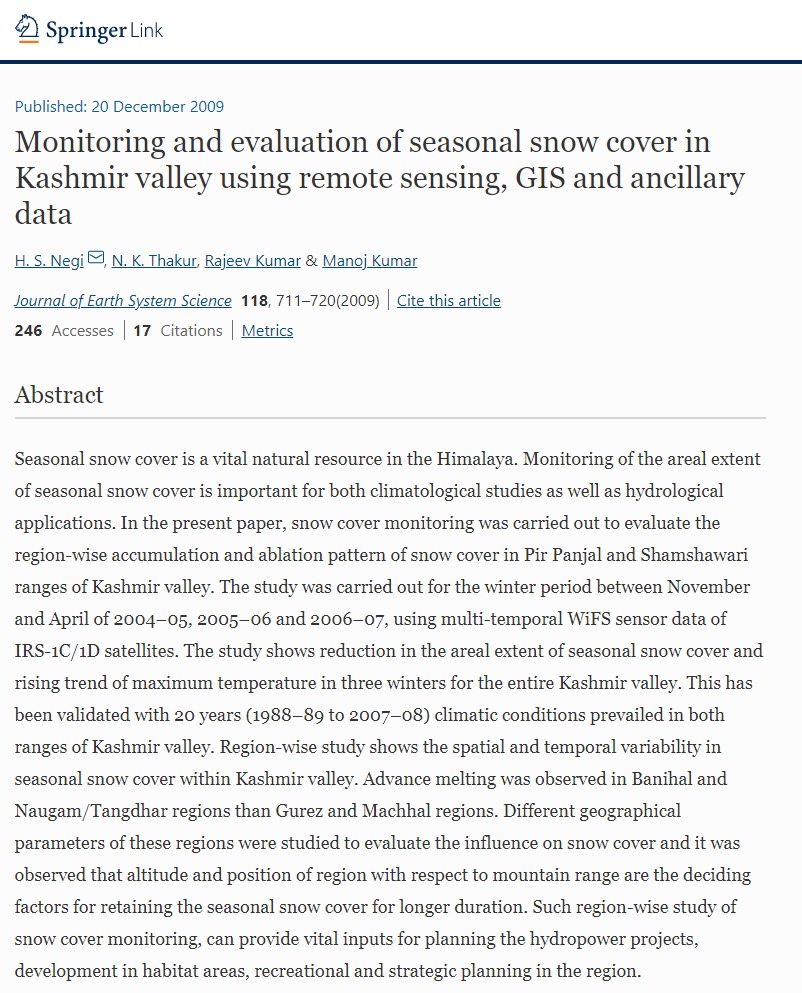
Seasonal snow cover is a vital natural resource in the Himalaya. Monitoring of the areal extent of seasonal snow cover is important for both climatological studies as well as hydrological applications. In the present paper, snow cover monitoring was carried out to evaluate the region-wise accumulation and ablation pattern of snow cover in Pir Panjal and Shamshawari ranges of Kashmir valley. The study was carried out for the winter period between November and April of 2004-05, 2005-06 and 2006-07, using multi-temporal WiFS sensor data of IRS-1C/1D satellites. The study shows reduction in the areal extent of seasonal snow cover and rising trend of maximum temperature in three winters for the entire Kashmir valley. This has been validated with 20 years (1988-89 to 2007-08) climatic conditions prevailed in both ranges of Kashmir valley. Region-wise study shows the spatial and temporal variability in seasonal snow cover within Kashmir valley. Advance melting was observed in Banihal and Naugam/Tangdhar regions than Gurez and Machhal regions. Different geographical parameters of these regions were studied to evaluate the influence on snow cover and it was observed that altitude and position of region with respect to mountain range are the deciding factors for retaining the seasonal snow cover for longer duration. Such region-wise study of snow cover monitoring, can provide vital inputs for planning the hydropower projects, development in habitat areas, recreational and strategic planning in the region.